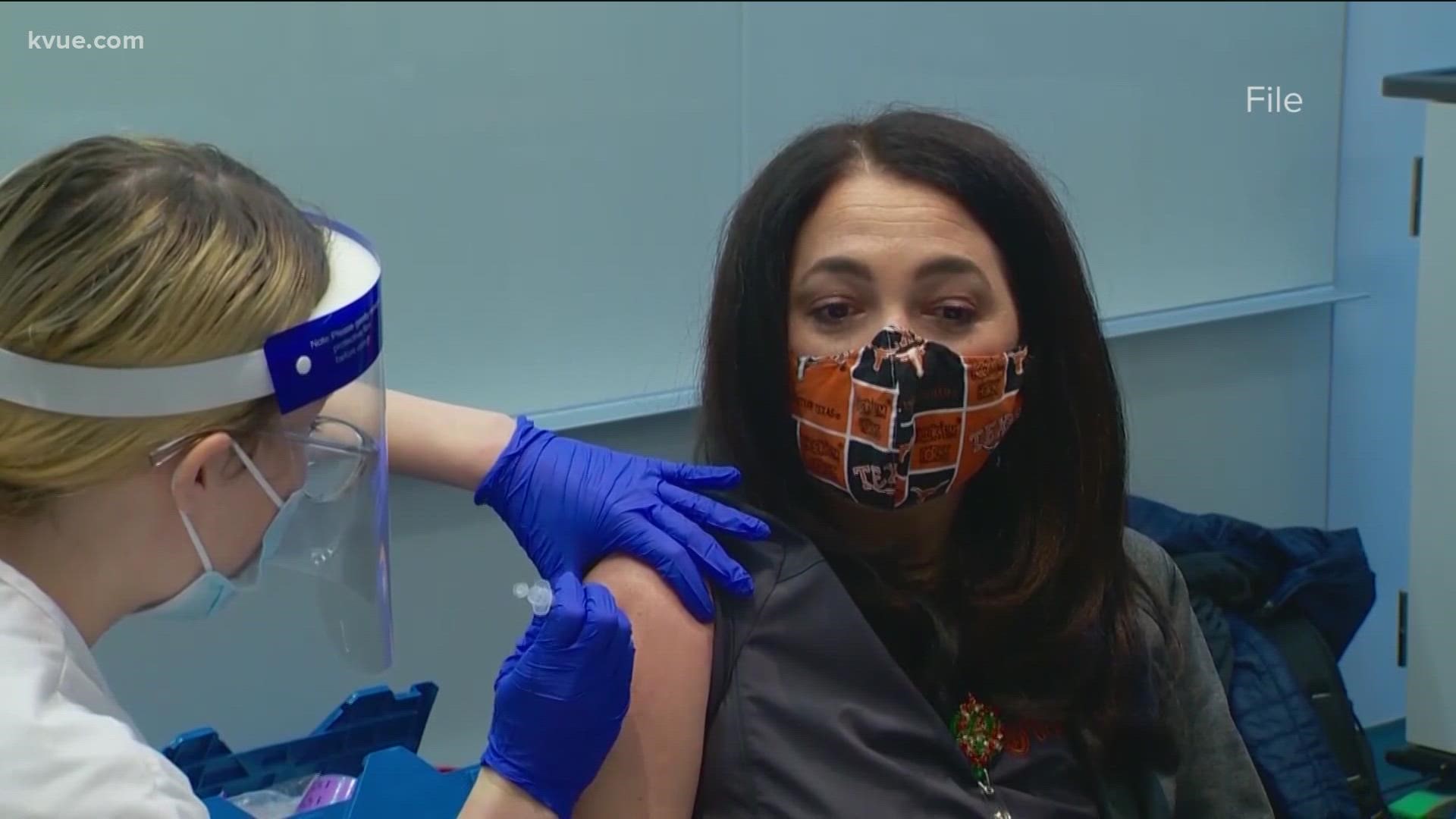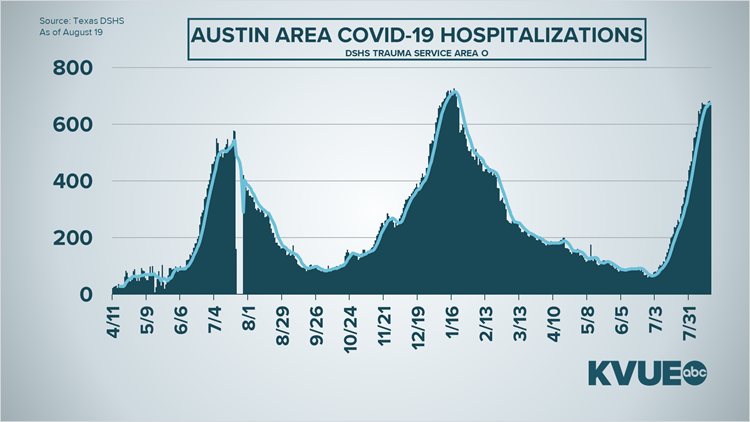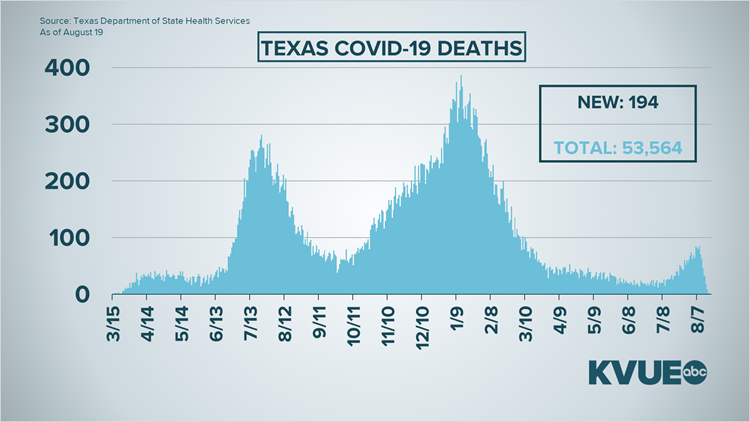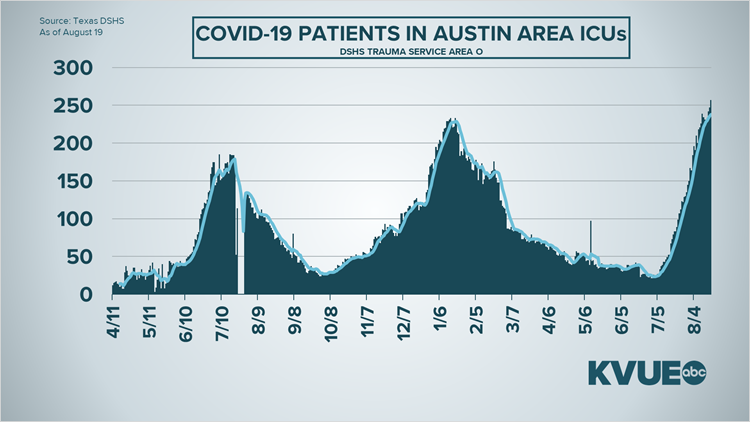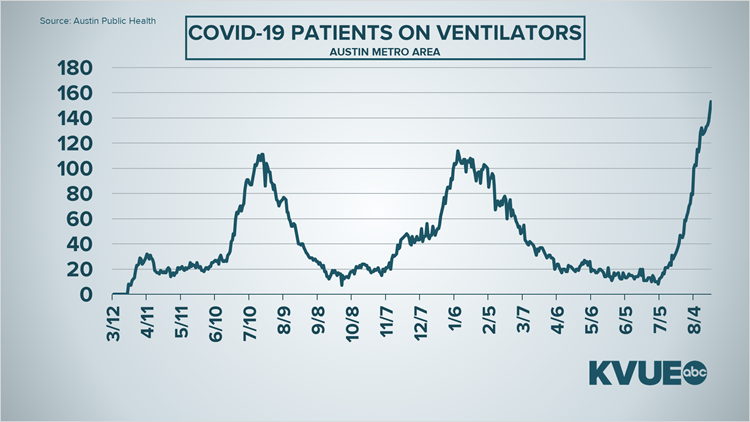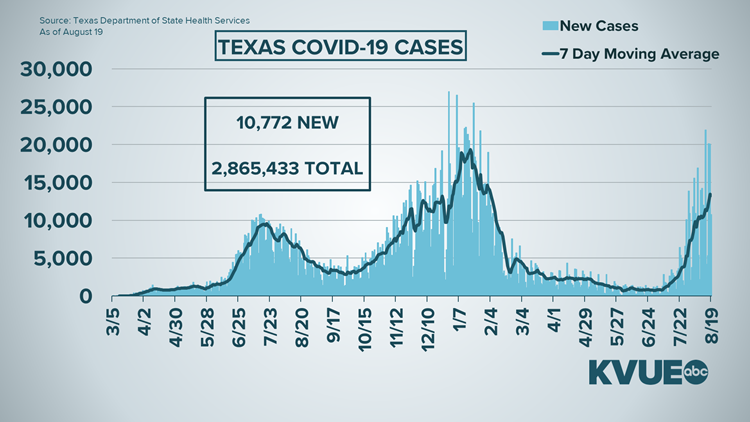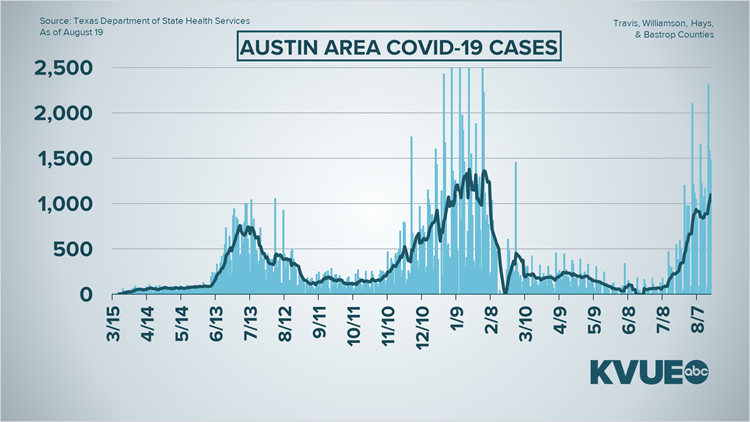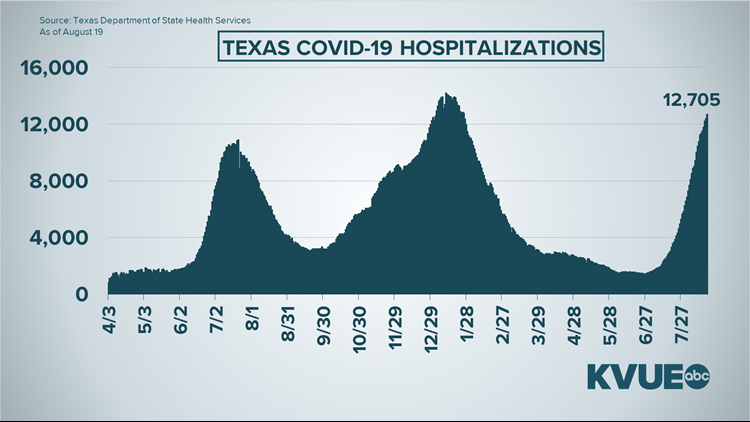AUSTIN, Texas — Has Austin-Travis County reached its peak for COVID-19 cases and hospitalizations? Local experts say it's not clear – and things could get worse before they get better.
During an Austin Public Health (APH) press conference on Friday morning, officials were asked if local data suggests cases and hospitalizations have reached a peak this week and, if so, what that would mean for the region. Medical Director Dr. Desmar Walkes said it's not clear at this time, especially with children going back to school this week.
"It's not clear that we've reached a peak. We would like to say that is true, but we also know that there's an impact that's going to be seen as a result of the opening of schools. We're already seeing an increased number of cases in those congregate settings, which are schools and child care centers," Walkes said.
She said that APH is hopeful that if local schools implement masking policies and parents keep sick children at home, get them tested for COVID-19 and notify schools if their children do have the virus so that proper contact tracing can be performed, those things will help mitigate the spread.
"If we're able to do that, then this may truly be a peak. However, it's incumbent upon this community to do the things that it needs to do to get this surge to decrease, to get our case numbers to decrease," Walkes said. "And so, we are looking to the community to make those changes and work with us to decrease the spread."
As of Thursday, Aug. 19, data shows that the 7-day moving average for new hospital admissions was 77 and an average of 602 people were hospitalized.
GRAPHS: Coronavirus data Aug. 19, 2021
Chief Epidemiologist Janet Pichette said that APH is seeing case reports and lab results coming in every day, and they are working on a backlog of cases that have been reported as well.
"I would say that our case numbers are pretty steady, and they're higher than I want them to be. I think, you know, with school starting this week, we can anticipate that we're going to see increased numbers over the next week or two before things get better ... and I'm basing that on our experience in the Austin area during the H1N1 flu season in 2009," Pichette said, adding, "And because we have a population that is specifically not vaccinated that is at risk and in a school setting, I think there is a possibility that we'll see higher numbers before we begin to decrease."
Pichette also reiterated Walkes's point that there are clusters occurring in congregate settings, but said that the vaccines are working.
"For those individuals who've been vaccinated, if they are experiencing a breakthrough infection, we are seeing that they – like the governor – are asymptomatic or they are experiencing a less severe illness. And most importantly, they are not the individuals that are surging our health care capacity currently," Pichette said. "So, I would implore to those citizens who have not been vaccinated to consider, strongly consider, you know, getting vaccinated and protecting our community at large. And to protect our children who are, are a vulnerable population who are not eligible for vaccine at the current time."
While health leaders are seeing an incremental uptick in vaccination rates, they worry minority communities are still behind.
According to data from APH, 50% of the Hispanic population and 37% of the Black/African American population have received their first dose. Health leaders would like to see 70% of each of these communities vaccinated with the first dose as soon as possible and 70% of the entire community fully vaccinated by Sept. 1.
PEOPLE ARE ALSO READING:

